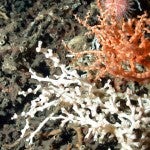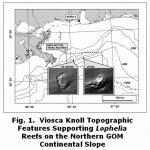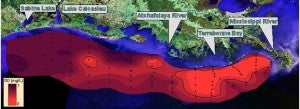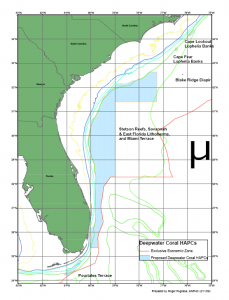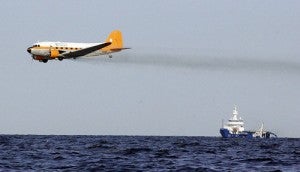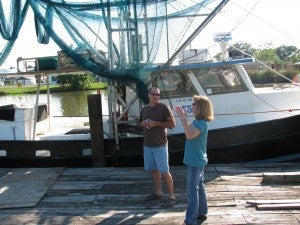This is the first post in a four part series discussing the ongoing – and “cascading” – effects in the Gulf, not from oil, but rather its toxic components and their impacts on sensitive ecosystems. Read the rest of the series.

In recent weeks, nearly every discussion about the BP Oil Disaster in the Gulf of Mexico has focused on the question: “how much of the oil from the broken well is left in the Gulf?”
The answer is simple: “None – it ain’t the oil, stupid!”
For some time now, the problem hasn’t been the oil in the Gulf, it’s the complicated series of impacts caused by the diverse substances that made up the oil as they are degraded in stages, both biologically and chemically. Each step along the way – and even the final breakdown products – poses important threats to a different suite of living things. The total damage done by this complex array of shifting impacts on the sensitive ecosystems and the people of the Gulf remains largely unknown.

Sure, some elements of the complex ecology of the Gulf of Mexico may get off scot-free from the disaster. But many others have been or will be heavily impaired, at least for some time. Taken together, there will be a significant total effect on the ecological systems of the Gulf, including the productivity and safety of seafood, and significant bottom-line impacts will be felt on human health and social and economic well-being.
Oil or Not Oil?
From the beginning of the disaster back in April, as “Gulf Light Sweet Crude” oil spewed into the depths of the Gulf, the components of that oil – a “toxic soup” of hundreds of different chemicals – have been subjected to intense physical, chemical and biological sorting and processing, and to transportation by currents both towards and away from shore.
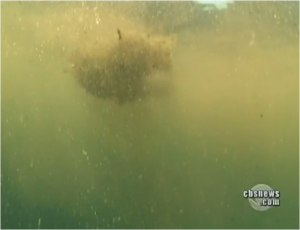
This is an underwater look at one of the oil plumes in the Gulf of Mexico in late May. Click to watch the video.
By the time the well was capped in mid-July, a significant amount of the approximately 200,000,000 gallons of liquid flowing from the broken well made it to the surface as recognizable oil. But from the very beginning, the various “toxic soup” ingredients have followed radically different pathways through the complex oceanographic and living systems of the Gulf, spreading and being processed in different directions at different depths, and at different rates.
It is clear that all layers of the sea in a large zone around the well have been exposed, from bottom to top, as the spreading and rising cone (or “plume”) of oil-based materials spewed from the well. In contrast to a more typical oil spill on the water’s surface, where the transport and ecological fate of oil components are well-known, there are still many unknowns related to how the various chemicals have moved and are breaking down underwater, including the biochemical pathways and timetables. Intense scientific investigation and complicated modeling are necessary before these complex relationships can be understood fully.
 The addition of dispersants, both at the bottom and the top of the water column, has further altered the chemicals’ pathways through the ecosystem, likely lessening some kinds of impacts and exacerbating others.It may well turn out that chemicals derived from oil spread over a much larger area because of the addition of dispersants, both at the bottom and the top. The final accounting of the ecological and human winners and losers has yet to be made.
The addition of dispersants, both at the bottom and the top of the water column, has further altered the chemicals’ pathways through the ecosystem, likely lessening some kinds of impacts and exacerbating others.It may well turn out that chemicals derived from oil spread over a much larger area because of the addition of dispersants, both at the bottom and the top. The final accounting of the ecological and human winners and losers has yet to be made.
At the end of the day, the complex set of effects on the living systems of the Gulf from the oil and its chemical components will be understood, more or less. The impacts on the human populations will be estimated, if not fully understood. It is grossly premature to declare victory, though, until we understand the ways in which the basic fabric of the ecosystems of the Gulf has been altered, and what might be required to restore its weave.











